- Pictures
- 56th Pottenger-Pottinger Reunion by Geralyn Pottinger Ellis, Oct 8, 2022
- Bill Reynolds Announces 56th Pottenger-Pottinger Reunion
- Pottenger-Pottinger 55th Reunion by Geralyn Pottinger Ellis, Oct 12, 2019
- Pottenger-Pottinger 55th Reunion, October 12, 2019
- 54th Pottenger-Pottinger Reunion by Geralyn Pottinger Ellis
- 54th Pottenger-Pottinger Reunion Toys by Lula Reynolds, Oct 13, 2018
- 54th Pottenger-Pottinger Reunion, Oct 13, 2018
- 53rd Pottenger-Pottinger Reunion by Geralyn Pottinger Ellis, Oct 14, 2017
- 53rd Pottenger-Pottinger Reunion, Oct 14, 2017
- LB Pottinger in WWII
- 1983 Gethsemane map by LB Pottinger
- 52nd Pottenger-Pottinger Reunion, Oct 8, 2016
- The Kentucky Standard, Nov 6, 2015 newspaper article (provided by Ron Pottinger)
- Capt Samuel Pottenger, commemorative marker ceremony, Oct 10, 2015
- 51st Pottenger-Pottinger Reunion, Oct 10, 2015
- Captain Samuel
- 50th Pottenger-Pottinger Reunion, Story by Ron Pottinger
- 50th Pottenger-Pottinger Reunion, Oct 13, 2014
- Gethsemane Distillery, 1872-1961
- Painting by Eula Pottinger La Croix
- Pottinger History, Thomas Lewis Patriot Grave Marking
- Pottenger-Pottinger in the News
- Pottenger-Pottinger Cemetery, Gethsemane
- Walnut Hill being torn down, 1939
- Capt Samuel Pottenger (1754-1831)
- Mariman Greenup Pottinger, Confederate Sympathizer
- Pottinger Coat of Arms
- What is "Second Cousin Once Removed"?
- Capt Samuel Pottenger's Clash with an Angry Bear, 1785
- Samuel Pottinger Names New Haven (published in the Ky Standard newpaper, 1985)
- The Big Meat Cabin of Capt Pottenger (published in Ky Standard newspaper, 1985)
- While Other Men Dreamed, Pottenger's Home Took Shape (published in Ky Standard newspaper, 1985)
- Pottinger's Home was Finest in State (published in Ky Standard newspaper, 1985)
- Samuel Pottenger and Walnut Hill (published in Ky Standard newspaper, 1985)
- Beechmont Women's Club, 2014
- Visit to Gethsemane (where old RR Station was located), Apr 7, 2014
- Visit to old Pottenger Cemetery, Gethsemane, Ky, Apr 7, 2014
- Visit to GW Pottenger's Old Homestead near Gethsemane, Ky, Apr 7, 2014
- Photo Album of Momma's Photos that came from Walnut Hill (middle 1800's, early 1900's)
- Pottenger-Pottinger Reunion, 1923
- Pottenger-Pottinger Reunion, 1925
- Pottenger-Pottinger Reunion, 1936
- Pottinger Get-Together at Sam Crowe's, 1953
- Pottenger-Pottinger Reunion, 1965
- Pottenger-Pottinger Reunion, 1966
- Pottenger-Pottinger Reunion, 1967
- Pottenger-Pottinger Reunion, 1968
- Pottenger-Pottinger Reunion, 1969
- Pottenger-Pottinger Reunion, 1970
- Pottenger-Pottinger Reunion, 1971
- Pottenger-Pottinger Reunion, 1972
- Pottenger-Pottinger Reunion, 1973
- Pottenger-Pottinger Reunion, 1974
- Pottenger-Pottinger Reunion, 1975
- Pottenger-Pottinger Reunion, 1976
- Pottenger-Pottinger Reunion, 1977
- Pottenger-Pottinger Reunion, 1978
- Pottenger-Pottinger Reunion, Bardstown, Ky, 1979 (photos by Linda Sellers Foster)
- Pottenger-Pottinger Reunion, 1980
- Pottenger-Pottinger Reunion, 1981
- Pottenger-Pottinger Reunion, 1982
- Pottenger-Pottinger Reunion, 1983
- Pottenger-Pottinger Reunion, 1984
- Pottenger-Pottinger Reunion, 1985
- Pottenger-Pottinger Reunion, 1986
- Pottenger-Pottinger Reunion, 1987
- Pottenger-Pottinger Reunion, 1988
- Pottenger-Pottinger Reunion, 1989
- Pottenger-Pottinger Reunion, 1990
- Pottenger-Pottinger Reunion, 1991
- Pottenger-Pottinger Reunion, 1992
- Pottenger-Pottinger Reunion, 1993
- Pottenger-Pottinger Reunion, 1994
- Pottenger-Pottinger Reunion, 1995
- Pottenger-Pottinger Reunion, 1996
- Pottenger-Pottinger Reunion, 1997
- Pottenger-Pottinger Reunion, 1998
- Pottenger-Pottinger Reunion, 1999
- Pottenger-Pottinger Cookout, 2000
- Pottenger-Pottinger Reunion, 2000
- Pottenger-Pottinger Cookout, 2001
- Pottenger-Pottinger Reunion, 2001
- Pottenger-Pottinger Cookout, 2002
- Pottenger-Pottinger Reunion, 2002
- Pottenger-Pottinger Reunion, 2003
- Pottenger-Pottinger Cookout, 2004
- Pottenger-Pottinger Reunion, 2004
- Pottenger-Pottinger Reunion, 2005
- Pottenger-Pottinger Reunion, 2006
- Pottenger-Pottinger Reunion, 2007
- Pottenger-Pottinger Reunion, 2008
- Pottenger-Pottinger Reunion, 2009
- Pottenger-Pottinger Reunion, 2010
- Pottenger-Pottinger Reunion 2011
- Pottenger-Pottinger Reunion 2012
- Pottenger-Pottinger Reunion 2013
|
|
| The Big Meat Cabin of Capt Pottenger (published in Ky Standard newspaper, 1985) |
| (Slide Show / Regular View / 2 Columns / Thumbnails)
|
 | 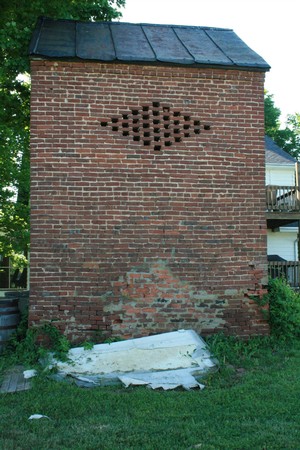 | The Big Meat Cabin of Capt. Pottenger
Written by David Hall and published in the Kentucky Standard 1985
Besides Capt. Samuel Pottenger locating and building “Pottenger’s Station” (it stood very near present day J. W. Dant Distillery and Abbey of Gethsemane), he also erected another log structure a few miles down the valley that same year. This structure, an early example of frontier communal effort, has had far reaching results. First called “Pottenger’s Meat Cabin,” in subsequent years it had to be enlarged and thus became notorious as “the Big Meat Cabin.”
To quote Forest Pottinger, Capt. Sam’s descendant and biographer… “An early animal path (“trace”) lay in the Pottinger Creek Valley and crossed another that ran from the Beech Fork near Lynn’s Station, southward by the site of the present town of New Haven and continued up Knob Creek on over the Nolin and Green River Country.
“Where these paths crossed Capt. Samuel Pottenger put up his “Meat Cabin” as a supply depot for his station situated four miles to the east of it. Animals were brought…from four areas through which the (prev. described) paths passed after which the game was dressed, cured and stored until needed.
“Late in the year 1782, right after Capt. Pottenger and his Militia Company returned from the Clark Expedition against the Ohio Indians, it developed that the inmates of Cartwright’s Station (situated midway between present day Springfield and Lebanon) were at starvation point and Capt. Samuel Pottenger took them to Pottenger’s Station. The ample supply of meat stored (in the meat cabin) …was all that stood between the settlers along the upper Beach Fork and starvation.”
Meat from wild game was the major source of sustenance during those dangerous early years for the increasing numbers of pioneers. But adequate supplies were uncertain and only Capt. Pottenger’s long range planning prevented a tragedy. It’s certain the Big Meat Cabin was a combined effort located at the sensible place and preventing the wasteful duplication of effort necessary to provide a strong storage secure against thieves, bears and wolves.
Also, meat curing by drying, smoking and salting could be accomplished in great quantity by a few people, thus saving much individual effort. The “Big Meat Cabin” was located in the northern part of the “delta” created by Pottenger’s Creek as it joined the Rolling Fork just south of present day New Haven, Ky. The Meat Cabin stood on the northeast side of the river, near the bank and close to the ancient animal path where it crossed the stream. Enlarged to meet the growing population it was sometimes referred to in the early records as “Pottenger’s Big Cabin” and then finally throughout the region as “Pottenger’s Repository.”
Within a half-mile of the Meat Cabin was an early settlement which is called Barnett’s Station or Barnett’s Fort in the early records. It, too, was just north of the mouth of Pottenger’s Creek, and northeast of the River.
The Rev. Joseph Barnett located the small cluster of three or four cabins which bore his name. He was certainly there permanently by 781, and since it’s often called a “Fort” there must have been some defensive enclosure at the site, although never large. Barnett’s Station was very near the Fort and crossroads and provided security for the Meat Cabin. It became a natural gathering place because of the crossroads location.
David Lee recalled living there at Barnett’s when he joined Capt. Pottenger’s militia for the 1781 campaign against the Indians. In his words, “the Indians were very troublesome in the year 1782. The fore part of the summer we were compelled to stand sentry every night around the Fort and every day around our corn patches while they were tended.” (David Lee later was married to Mary Osborne at Barnett’s Fort in July 1785 by the Rev. Joseph Barnett, himself).
Thus the small “station” at the crossroads and close by “Pottenger’s Meat Cabin” created constant activity in the region near the mouth of Pottenger’s Creek. When flatboat traffic developed for shipping produce down the river network to New Orleans, Capt. Samuel Pottenger was among the leaders. A wharf was extended from “Pottenger’s Repository for loading activities. Soon the loading area was being called “Pottenger’s Landing.” As we shall see, the “Meat Cabin” was the nucleus and prime foundation which led directly to the present day community of New Haven, Ky. | | () | | | 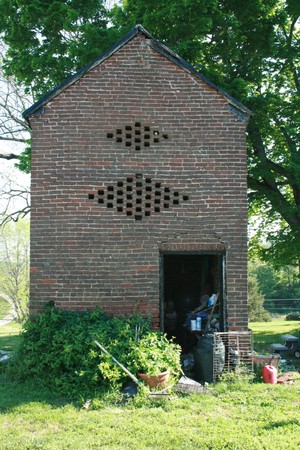 | | These photos were taken by me, April 19, 2012 of the original meat house which is still standing on the original site at the location of where "Walnut Hill" stood. | | () | | | 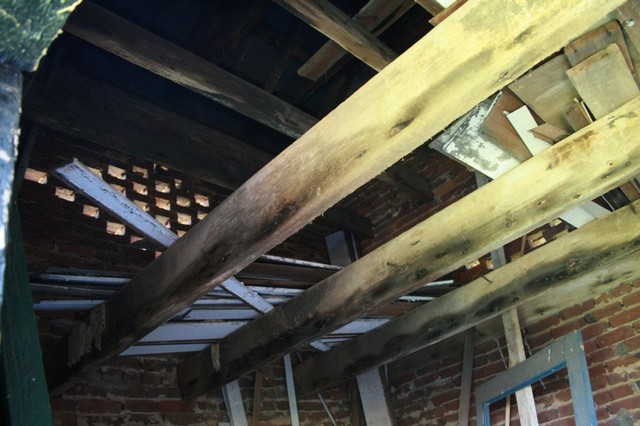 | | Inside of the meat house. | | () | | | 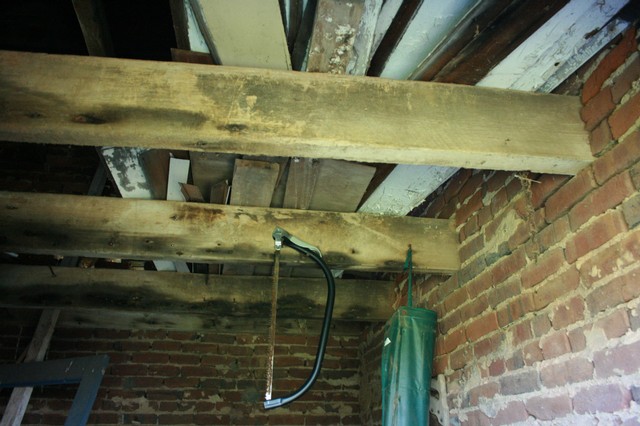 | | Inside of the meat house | | () | | | 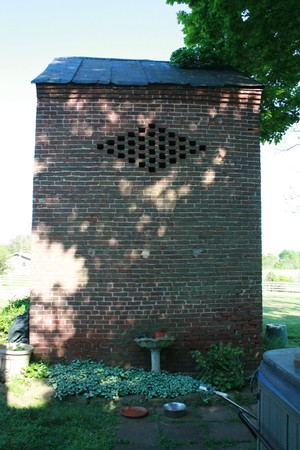 | | | () | | |
|